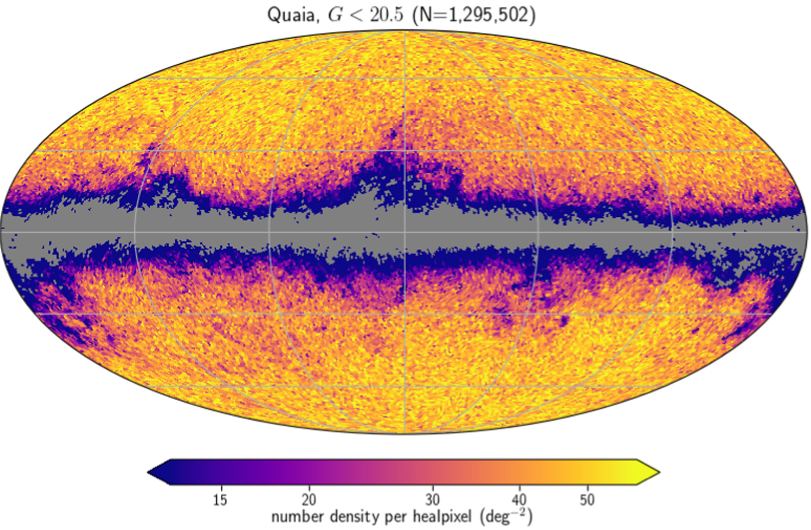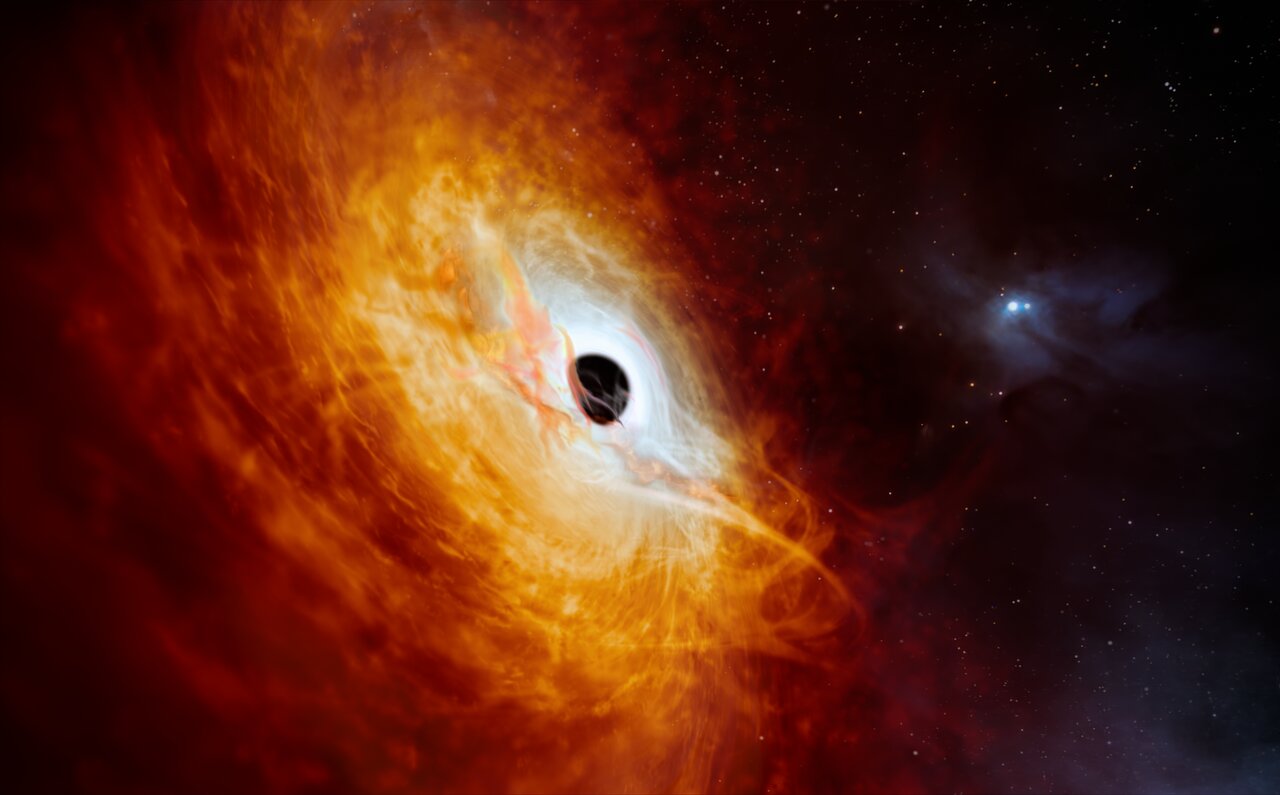After the Big Bang came the Dark Ages, a period lasting hundreds of millions of years when the universe was largely without light. It ended in the epoch of reionization when neutral hydrogen atoms became charged for the first time and the first generation of stars started to form. The question that has perplexed astronomers is what caused the first hydrogen atoms to charge. A team of researchers have observed an early quasar that pumped out enormous amounts of x-ray radiation helping to drive the reionization.
New Research may Explain how Supermassive Black Holes in the Early Universe Grew so Fast

Not long ago, the James Webb Space Telescope (JWST) peered into Cosmic Dawn, the cosmological period when the first galaxies formed less than one billion years after the Big Bang. In the process, it discovered something rather surprising. Not only were there more galaxies (and brighter ones, too!) than expected, but these galaxies had supermassive black holes (SMBH) much larger than cosmological models predicted. For astronomers and cosmologists, explaining how these galaxies and their SMBHs (aka. quasars) could have grown so large less than a billion years after the Big Bang has become a major challenge.
Several proposals have been made, ranging from optical illusions to Dark Matter accelerating black hole growth. In a recent study, an international team led by researchers from the National Institute for Astrophysics (INAF) analyzed a sample of 21 quasars, among the most distant ever discovered. The results suggest that the supermassive black holes at the center of these galaxies may have reached their surprising masses through very rapid accretion, providing a plausible explanation for how galaxies and their SMBHs grew and evolved during the early Universe.
Continue reading “New Research may Explain how Supermassive Black Holes in the Early Universe Grew so Fast”Hubble Gets its Best Look At the First Quasar

The term quasar comes from quasi-stellar objects, a name that reflected our uncertainty about their nature. The first quasars were discovered solely because of their radio emissions, with no corresponding visual objects. This is surprising since quasars blaze with the light of trillions of stars.
In recent observations, the Hubble examined a historical quasar named 3C 273, the first quasar to be linked with a visual object.
Continue reading “Hubble Gets its Best Look At the First Quasar”Why are Some Quasars So Lonely?

At the centre of most galaxies are supermassive black holes. When they are ‘feeding’ they blast out jets of material with associated radiation that can outshine the rest of the galaxy. These are known as quasars and they are usually found in regions where huge quantities of gas exist. However, a recent study found a higher than expected number of quasars that are alone in the Universe. These loners are not surrounded by galaxies nor a supply of gas. The question therefore remains, how are they shining so brightly.
Continue reading “Why are Some Quasars So Lonely?”This Ancient Galaxy Merger Will Produce a very Luminous Quasar

In the contemporary Universe, massive galaxies are plentiful. But the Universe wasn’t always like this. Astronomers think that galaxies grew large through mergers, so what we see in space is the result of billions of years of galaxies merging. When galaxies merge, the merger can feed large quantities of gas into their centers, sometimes creating a quasar.
Much of this is theoretical and shrouded in mystery, but astronomers might have found evidence of a galaxy merger creating a quasar.
Continue reading “This Ancient Galaxy Merger Will Produce a very Luminous Quasar”Webb Looks at One of the Best Gravitationally Lensed Quasars Ever Discovered

It looks like a distant ring with three sparkly jewels, but the Webb telescope’s (JWST) most recent image is really the view of a distant quasar lensed by a nearby elliptical galaxy. The telescope’s Mid-Infrared Instrument (MIRI) looked at the faint apparition during a study of dark matter and its distribution in the Universe.
Continue reading “Webb Looks at One of the Best Gravitationally Lensed Quasars Ever Discovered”The Earliest Merging Quasars Ever Seen

Studying the history of science shows how often serendipity plays a role in some of the most important discoveries. Sometimes, the stories are apocryphal, like Newton getting hit on the head with an apple. But sometimes, there’s an element of truth to them. That was the case for a new discovery of the oldest pair of merging quasars ever discovered – and it all started with a pair of red blots on a picture.
Continue reading “The Earliest Merging Quasars Ever Seen”There’s Another, More Boring Explanation for those Dyson Sphere Candidate Stars
Dyson Spheres have been a tantalising digression in the hunt for alien intelligence. Just recently seven stars have been identified as potential candidates with most of their radiation given off in the infrared wavelengths. Potentially this is the signature of heat from a matrix of spacecraft around the star but alas, a new paper has another slightly less exciting explanation; dust obscured galaxies.
Continue reading “There’s Another, More Boring Explanation for those Dyson Sphere Candidate Stars”This New Map of 1.3 Million Quasars Is A Powerful Tool

Quasars are the brightest objects in the Universe. The most powerful ones are thousands of times more luminous than entire galaxies. They’re the visible part of a supermassive black hole (SMBH) at the center of a galaxy. The intense light comes from gas drawn toward the black hole, emitting light across several wavelengths as it heats up.
But quasars are more than just bright ancient objects. They have something important to show us about the dark matter.
Continue reading “This New Map of 1.3 Million Quasars Is A Powerful Tool”The Brightest Object Ever Seen in the Universe

It’s an exciting time in astronomy today, where records are being broken and reset regularly. We are barely two months into 2024, and already new records have been set for the farthest black hole yet observed, the brightest supernova, and the highest-energy gamma rays from our Sun. Most recently, an international team of astronomers using the ESO’s Very Large Telescope in Chile reportedly saw the brightest object ever observed in the Universe: a quasar (J0529-4351) located about 12 billion light years away that has the fastest-growing supermassive black hole (SMBH) at its center.
Continue reading “The Brightest Object Ever Seen in the Universe”

